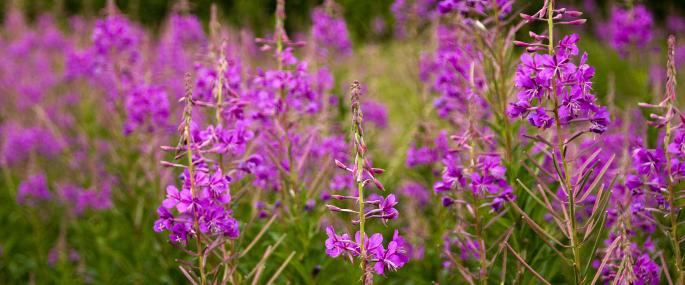The tall, pink flower spikes of Rosebay Willowherb can often be seen crowding together in thick stands in open spaces such as woodland clearings, roadside verges, grassland and waste ground. A successful coloniser, Rosebay Willowherb has grown in number from a scarce woodland plant to a ubiquitous flower. This expansion occurred as a result of two World Wars clearing huge areas of forest and burning the ground in both town and countryside - just the right conditions for this plant to thrive in. One of its common names in the south-east alludes to this takeover: 'Bombweed'.
Although they sometimes don't look especially wildlife-friendly, our roadside verges, railway cuttings and waste grounds can provide valuable habitats for all kinds of plants and animals from Rosebay Willowherb to Wood Mice. The Wildlife Trusts get involved in different projects to help make these places as beneficial for wildlife as possible. We have a vision of a 'Living Landscape': a network of habitats and wildlife corridors across town and country, which are good for both wildlife and people. You can support this greener vision for the future by joining your local Wildlife Trust.
